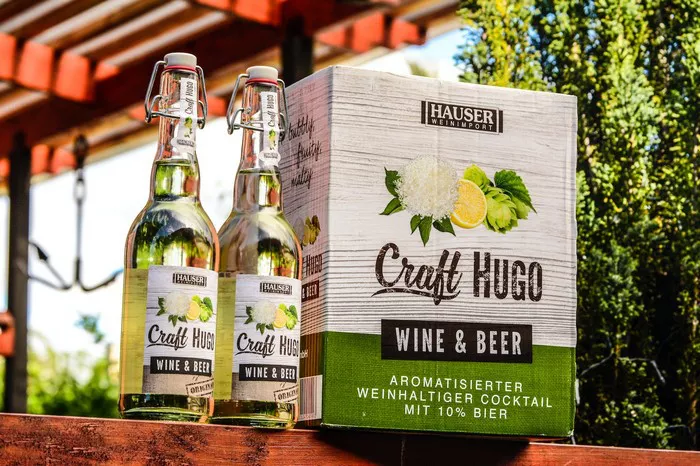In the realm of beverage choices, the rise of non-alcoholic or “0” beer has been a notable trend. With the increasing focus on health and wellness, many individuals seek alternatives to traditional alcoholic beverages. However, a lingering question often accompanies these alternatives: Is there alcohol in 0 beer? This inquiry delves into the intricate world of brewing, regulation, and consumer expectations, aiming to provide clarity on a topic that has garnered significant attention in recent years.
Understanding Non-Alcoholic Beer: A Brief Overview
Before delving into the question at hand, it’s essential to grasp the fundamentals of non-alcoholic beer. Unlike its alcoholic counterparts, which typically contain varying percentages of alcohol by volume (ABV), non-alcoholic beer is specifically crafted to contain minimal or no alcohol content. This characteristic makes it a popular choice for individuals seeking the taste and experience of beer without the intoxicating effects.
The Brewing Process: Eliminating Alcohol Content
To produce non-alcoholic beer, brewers employ techniques designed to minimize or eliminate alcohol content while retaining the beverage’s flavor profile. One common method involves brewing the beer in the traditional manner before removing the alcohol through processes such as vacuum distillation, reverse osmosis, or evaporation. These methods allow brewers to separate the alcohol from the liquid while preserving the desired flavors and aromas.
Despite these efforts, trace amounts of alcohol may still remain in the final product. The precise amount can vary depending on factors such as the brewing process, ingredients used, and regulatory standards. Consequently, the question “Is there alcohol in 0 beer?” warrants a nuanced exploration that considers these variables.
Regulatory Standards: Defining Non-Alcoholic Beer
To address consumer concerns and ensure transparency, regulatory agencies around the world have established standards for labeling and categorizing non-alcoholic beer. In the United States, for example, the Alcohol and Tobacco Tax and Trade Bureau (TTB) defines non-alcoholic beer as containing no more than 0.5% ABV. Similarly, the European Union sets a limit of 0.5% ABV for beverages labeled as non-alcoholic.
These standards underscore the distinction between traditional alcoholic beverages and their non-alcoholic counterparts, providing consumers with clear guidelines for making informed choices. However, they also raise the question of whether trace amounts of alcohol in 0 beer pose any significant implications for consumers.
Addressing Concerns: Alcohol Content in 0 Beer
Despite regulatory standards stipulating minimal alcohol content in non-alcoholic beer, some consumers remain wary of its potential effects. The presence of even trace amounts of alcohol may raise concerns for individuals abstaining from alcohol due to personal, religious, or health reasons. As such, understanding the actual alcohol content in 0 beer becomes crucial for those navigating these considerations.
Research into the alcohol content of non-alcoholic beer has yielded mixed findings. While some studies have detected minimal alcohol levels well below the regulatory threshold, others have identified slightly higher concentrations in certain products. These variations underscore the complexity of the brewing process and the challenges associated with completely eliminating alcohol from beer.
Moreover, factors such as storage conditions, fermentation techniques, and ingredient selection can influence the final alcohol content of non-alcoholic beer. Consequently, while the label may indicate a negligible alcohol percentage, consumers should remain vigilant and considerate of individual sensitivities and preferences.
Consumer Perceptions: Navigating Expectations
In addition to regulatory standards and scientific analysis, consumer perceptions play a significant role in shaping the discourse surrounding non-alcoholic beer. For many individuals, the decision to consume 0 beer hinges not only on its alcohol content but also on taste, aroma, and overall experience. As such, breweries face the challenge of meeting consumer expectations while adhering to regulatory requirements.
Marketing and labeling also contribute to consumer perceptions of non-alcoholic beer. Clear and accurate labeling that communicates the beverage’s alcohol content can foster trust and transparency, helping consumers make informed choices. Furthermore, initiatives such as alcohol-free beer festivals and tasting events provide opportunities for consumers to explore and evaluate a diverse range of non-alcoholic options.
However, misconceptions and stigma surrounding non-alcoholic beer persist in some circles. Despite its growing popularity and improved quality, some individuals may still view 0 beer as inferior or lacking in flavor compared to its alcoholic counterparts.Overcoming these perceptions requires ongoing education and advocacy to highlight the diversity and complexity of non-alcoholic offerings.
The Future of Non-Alcoholic Beer: Trends and Innovations
As consumer preferences continue to evolve, the non-alcoholic beer market shows no signs of slowing down. Breweries worldwide are investing in research and innovation to enhance the quality and variety of their non-alcoholic offerings. From craft breweries experimenting with innovative flavors to major brands expanding their non-alcoholic product lines, the landscape of 0 beer is undergoing a transformation.
Emerging trends such as low-calorie, gluten-free, and organic non-alcoholic beer cater to diverse dietary preferences and lifestyle choices. Additionally, collaborations between breweries and beverage experts are pushing the boundaries of creativity, resulting in unique and memorable non-alcoholic brews.
Furthermore, advancements in brewing technology and ingredient sourcing are driving improvements in the taste and mouthfeel of non-alcoholic beer. Through meticulous craftsmanship and attention to detail, brewers can replicate the sensory experience of traditional beer without the presence of alcohol.
Conclusion
In conclusion, the question “Is there alcohol in 0 beer?” encapsulates a multifaceted discussion that encompasses brewing techniques, regulatory standards, consumer perceptions, and industry innovations. While non-alcoholic beer is crafted to contain minimal or no alcohol content, trace amounts may still be present due to the inherent complexities of the brewing process.
Regulatory agencies play a crucial role in defining and enforcing standards for non-alcoholic beer, ensuring transparency and consistency in labeling. Consumer perceptions and preferences further shape the evolving landscape of 0 beer, driving breweries to innovate and diversify their offerings.
As the demand for non-alcoholic alternatives continues to rise, breweries must navigate the delicate balance between meeting regulatory requirements and exceeding consumer expectations. By fostering trust, transparency, and innovation, the future of non-alcoholic beer promises a flavorful and fulfilling experience for all.


